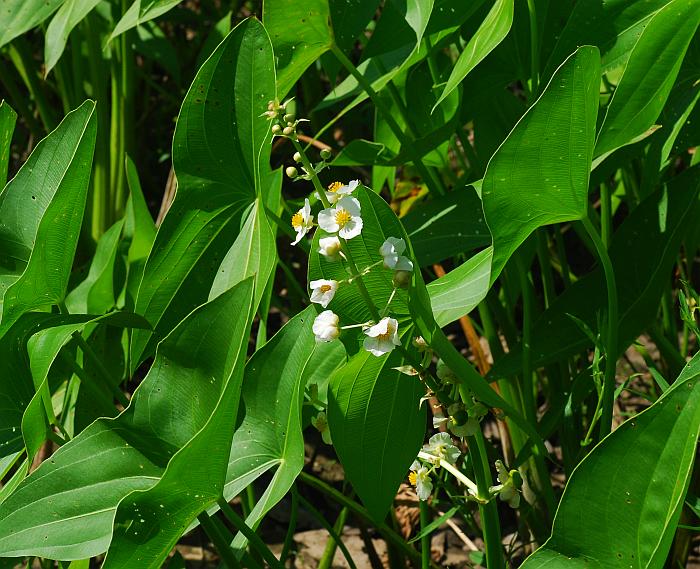Sagittaria brevirostra Mack. & Bush
Midwestern Arrowhead

Native
CC = 5
CW = -5
MOC = 61
© SRTurner
Sagittaria brevirostra Mack. & BushMidwestern Arrowhead | |
 |
Native CC = 5 CW = -5 MOC = 61 |
© SRTurner |
|
Family - Alismataceae Habit - Perennial forb. Leaves - Long petiolate to 1.5 m, petioles inflated and spongy. Blades of emergent leaves hastate or sagittate, glabrous.
Inflorescence - Racemes with whorled nodes. Bracts at nodes to 4.0 cm, lanceolate, with narrowly actute or acuminate tips.
Flowers - Unisexual or perfect; those at lower nodes usually perfect. Pedicels to 25 mm, not thickened. Stamen filaments longer than anthers, not basally swollen, glabrous.
Fruits - Globose clusters of achenes. Fruits obovate, 2.1-3.1 mm long, the beak 0.4-1.7 mm long, narrowly triangular, erect to ascending
Flowering - June - September. Habitat - Mud flats, muddy margins of ponds, sloughs, and ditches. Origin - Native to the U.S. Lookalikes - Other species of Sagittaria, especially S. latifolia and S. calycina. Other info. - This is a common inhabitant of areas which remain muddy and open throughout much of the growing season. There are several other members of the genus in Missouri. This one can be identified by the long, tapered bracts at the inflorescence nodes, the sagittate leaves, and the ascending beaks on the achenes. Photographs taken near Labadie, Franklin County, MO, 7-15-2013, and at Shaw Nature Reserve, Franklin County, MO, 9-10-2017 (SRTurner). |